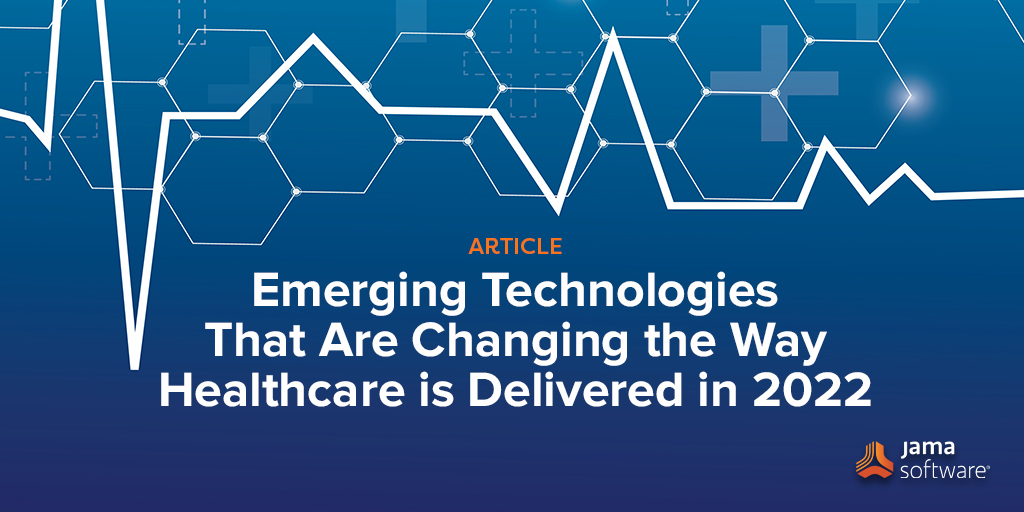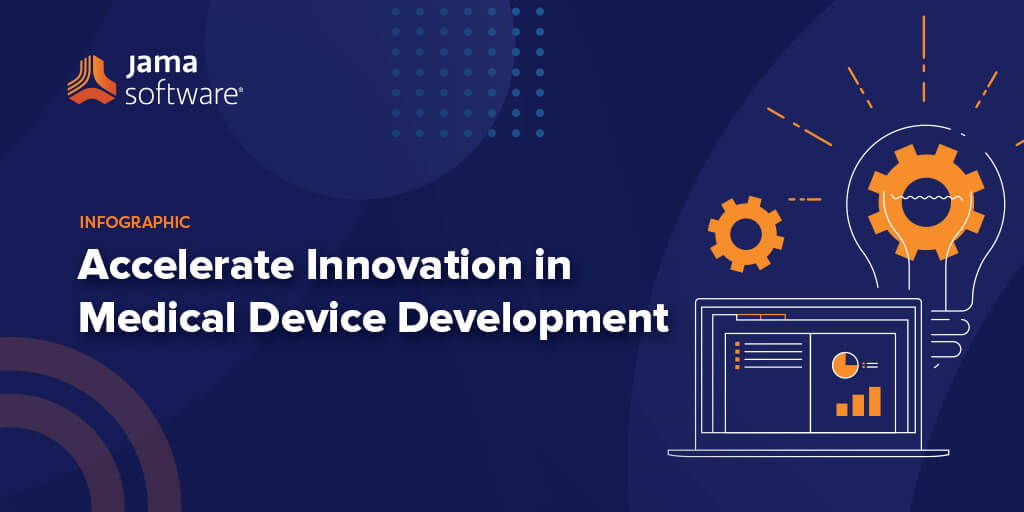Editor’s Note: In this blog, guest author Rahul Varshneya – President of Arkenea – breaks down emerging technologies that are changing the way healthcare is delivered in 2022.
Emerging Healthcare Technologies
It’s apparent that the pandemic has hastened the healthcare industry’s digitization. Working hand-in-hand with technology is the future of healthcare, and healthcare professionals must incorporate innovative healthcare technologies to stay in the spotlight in the coming years.
The Healthcare Technology Market is expected to be $390.7 billion by 2024. Therefore, many healthcare organizations that would not have been considered tech firms in the past have changed their focus to technology and its potential to transform how their products and services are delivered.
According to the HIMSS Future of Healthcare Report, over the next five years, 80 percent of healthcare providers aim to increase their investment in relevant technological solutions. Today, new technologies are being used in practically every healthcare institution to combat illness, develop new vaccinations, and treat patients to help them live healthier lives.
This article will help explore the four ways in which emerging technology is reshaping healthcare for the future:
1. Integrating Artificial Intelligence And Natural language processing For Seamless Experience
Many technical developments, including AI and NLP, are increasingly being lauded for their ability to alter the healthcare industry.
From enhancing clinical data by mapping data elements in unstructured text to structured fields in Electronic Health Records to converting data from machine-readable or different formats into natural language for reporting and training/education purposes, AI, and NLP have it all covered.
The high-level use case for artificial intelligence in healthcare is aiding in the analysis of enormous amounts of unstructured data.
More recently, Google’s DeepMind created an A.I. for breast cancer analysis. On pre-selected data sets, the algorithm outscored all human radiologists by 11.5 percent on average in detecting breast cancer. Avive Solutions developed Avive AED that utilizes AI to improve survival rates for cardiac arrest.
Given the abundance of patient input, healthcare facilities must begin investing in and deploying NLP-powered patient feedback management solutions to secure and ensure patient loyalty.
A 2018 study evaluated radiology reports for pulmonary embolism and postoperative venous thromboembolism and discovered that unorganized data analysis established 50% more cases than structured information alone.
AI and NLP definitely be the driving force in the future for better clinical decision support and patient health outcomes.
Related: Medical Device Startup, Proprio, Chooses Jama Connect® to Drive Innovation
2. The Power of Augmented Reality & Virtual Reality in Healthcare
Patients can find hospitals to be a stressful setting, making it extremely challenging to keep up with anxiety levels and heart rates while undergoing treatment. VR can present itself as an appealing possibility for assisting patients in relaxing and suffering less in such painful scenarios.
A recent Harvard Business Review study showed that VR-trained surgeons exhibited a 230 percent increase in overall performance as compared to their traditionally trained peers. Virtual and augmented reality solutions, which are continually expanding, have had a tremendous impact on healthcare technology
A 2016 report says: “Patients have benefited from VR technology, which has shown to be effective in pain management. Women are being given virtual reality headsets to help them imagine calm places while childbirth.”
Whether it’s using VR to give an exciting experience for patients to virtually visit a health institution or using VR to allow the patient to deal with pain, there is much to be intrigued about.
For the past decade, advancements that were inconceivable are now being realized. In 2022, the number of AR applications in healthcare will also increase.
AccuVein has come up with a real-world problem-solving technique using augmented reality. The use of AR here makes it much easier for clinicians to locate veins when administering injections by sensing the heat signature of the blood flow and outlining it on the patient’s arm. Using the AccuVein vein finder has been found to improve the likelihood of first stick success by 3.5 times and to reduce the need to call for assistance by 45%.
Implementing such emerging technology allows healthcare practitioners unfettered access to activities that are not currently available, as well as allowing individuals to regain their overall health and mental well-being.
3. Role Of IoMT And Wearables In Healthcare
Without a doubt, the Internet of Medical Things (IoMT) is ushering in a new era of change in the healthcare industry by rethinking the interplay between people and devices in the delivery of healthcare solutions.
The global IoMT market was worth $44.5 billion in 2018, and by 2026, it is predicted to be worth $254.2 billion. Investments in IoMT are already on the upswing, and the healthcare technology trend is expected to grow in the future years.
Certain remote areas in the US cannot afford to have full-time hospitals. IoMT devices bring regular consultations into people’s homes, which is especially important for patients with limited mobility. Portable point-of-care devices are being used to run regular tests now and share the results remotely with a doctor.
Devices that are part of the Internet of Medical Things are now solving problems that the healthcare sector had to deal with in 2020.
For example, many patients tend to miss their medications and this needs to be monitored. This issue takes on added urgency since studies demonstrate that only half of the chronic disease medications are used as prescribed.
To address this concern digital blood pressure cuffs (smart pills equipped with edible sensors) are being used to deliver a continuous stream of blood pressure and pulse data to a doctor that will alert their patients if they are taking their medications as prescribed.
In addition, the development of wearable apps in healthcare has made health monitoring easier than in the past. Wearables such as watches, bands, and other accessories have made it easier to track health metrics.
DARPA (Defense Advanced Research Projects Agency) has also been working on various wearable computers that have helped patients with epilepsy and strokes by stimulating or deactivating portions of the brain. This technology helps amputated patients regulate the motions of their prostheses by interfacing with their brain system.
Thus, wide adoption of IoMT devices would be the easiest to predict among the health tech trends soon.
4. Made Easy By Personalized Mobile Apps And Chatbots
Consumers are accustomed to the seamless experience that a mobile app provides. The healthcare sector is not an exception. Numerous patient scenarios can be delivered shortly by a potent native mobile application.
From soliciting physician consultations, uploading a patient’s medical record, and receiving lab tests via a mobile app, health organizations can certainly develop useful digital technology that is ideal for today’s patients.
A customized mobile app with integrated EHR/EMR systems could become the single most essential point of interaction between healthcare practitioners and patients.
One such scenario was when the SharpQuest team created My Care Central, a patient-facing mobile app that allows users to contact clinicians and nurses, view appointments, prescriptions, and much more.
The results concluded improved care processes yielding an average 4.9/5 patient rating, improved clinician satisfaction with easier workflow and positive feedback, and reduced costs from printed materials
Providing a tailored experience is crucial in healthcare, and a chatbot adds another touchpoint that customers value. The way healthcare is probably offered will alter as the number of chatbots grows at such a rapid rate.
With the potential for improvement in patient pathways, there is plenty of scope for improvements in patient routes, medication management, and assistance in emergency circumstances.
Healthily app has implemented this technique to provide information about different diseases’ symptoms, assessments of overall health, and tracks patient progress.
Furthermore, chatbots can be used to provide mental health help by bringing in cognitive behavioral therapy (CBT) to patients suffering from depression or post-traumatic stress disorder (PTSD). Woebot, (launched in 2018) is among those successful chatbots that provide CBT, mindfulness, and Dialectical Behavior Therapy (CBT).
Choices are limitless for chatbots, from care management service to potential diagnosis of mild conditions there’s plenty to be enthused about within the technology.
Related: An Interview with Award-Winning Medical Device Risk Management Educator and Author Bijan Elahi
Final Thoughts
Today’s healthcare industry has profited immensely from technological advancements. Emerging technologies are helping to produce new, better approaches while also lowering expenses. Although some technologies are yet to be completely explored, they have already caused a remarkable shift in the industry.
The arrival of new technologies such as artificial intelligence (AI), natural language processing (NLP), augmented reality (AR), virtual reality (VR), and chatbots are radically transforming the landscape and ushering in a new era in healthcare. In this industry, the purpose of digitization is to improve healthcare quality while reducing the physician burden.
These ‘patient first’ technologies are clearing the way for new sectors of medical science applications, enabling patients to live longer while also contributing to research and innovation.

